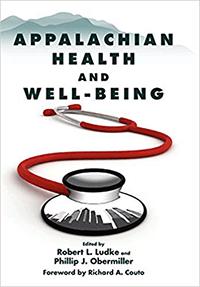
Appalachian health and well-being
The University Press of Kentucky, 2012
Editors: Robert L. Ludke and Phillip J. Obermiller
408 pages
ISBN: 0674136489
Appalachian health and well-being, edited by Robert L. Ludke and Phillip J. Obermiller, provides continued dialogue on the inequalities of health care as a measure of injustice in rural communities. Dr Obermiller is a sociologist who has authored numerous books on topics surrounding the fundamental issues the lowest socioeconomic classes face today and served as president of the Appalachian Studies Association. Dr Ludke is a professor emeritus of family medicine at the University of Cincinnati and member of the board of the Urban Appalachian Council, who has published over 40 academic articles on topics from public health to sociological issues. Both authors have extensively studied health care encompassing impoverished rural regions in addition to underserved urban areas.
The book is organized into three parts encompassing health determinants, health status, and urban health. The book’s contents are compiled by multiple experts who each wrote a chapter on their area of expertise, providing an in-depth view of the subject. For example, Michael S. Hendryx, who has extensively researched the environmental effects of coal mining in rural areas, wrote chapter 2, ‘Health and the physical environment’. In this chapter, tables effectively highlight the plights of rural areas with large coal mining industries. These conditions include lower rates of college education along with increased poverty and smoking rates. Additionally, some chronic illnesses such as diabetes are more prevalent in rural areas. Chapter 6, ‘Diabetes and its management’, details the management of diabetes from the perspective of self, family, medicine, and models of interventions in rural communities. The treatment of health issues such as diabetes and heart disease are complicated in rural areas due to a lack of education and inaccessibility to providers.
A challenge for any book written by more than one author is the variety of perspectives each contributes to their topic. The editors provide continuity by ending each chapter with sections covering further researcher and policy recommendations. This book provides examples that can be generalized to analogous problems in remote locations throughout the world.
Justice is an underlying theme throughout the book. Distributive justice is at the heart of the health problems facing rural communities internationally. Urban areas tend to have multiple providers in each neighborhood, while those who live further outside of the city typically travel long distances to receive the care they need. The book provides a particularly poignant example of the city of Pittsburgh, Pennsylvania, with 29 hospitals and 12 cardiac rehabilitation units, while 76 rural counties in the state had none of these facilities (p. 117). Policy-makers stand the best chance to correct this systemic problem of healthcare shortages throughout rural areas around the world.
Appalachian health and well-being helps readers to become more aware of the unique problems rural communities face around the world. Issues are a complex blend of economic, social, and political facets evolving from one community to the next. Although specific details of these issues are continually changing, the subject matter highlighted in this book will remain a useful tool for many years to come. Individuals and organizations researching rural health will find this book to be an invaluable resource in their quest for a better understanding of the unique challenges of rural compared to urban environments internationally.
